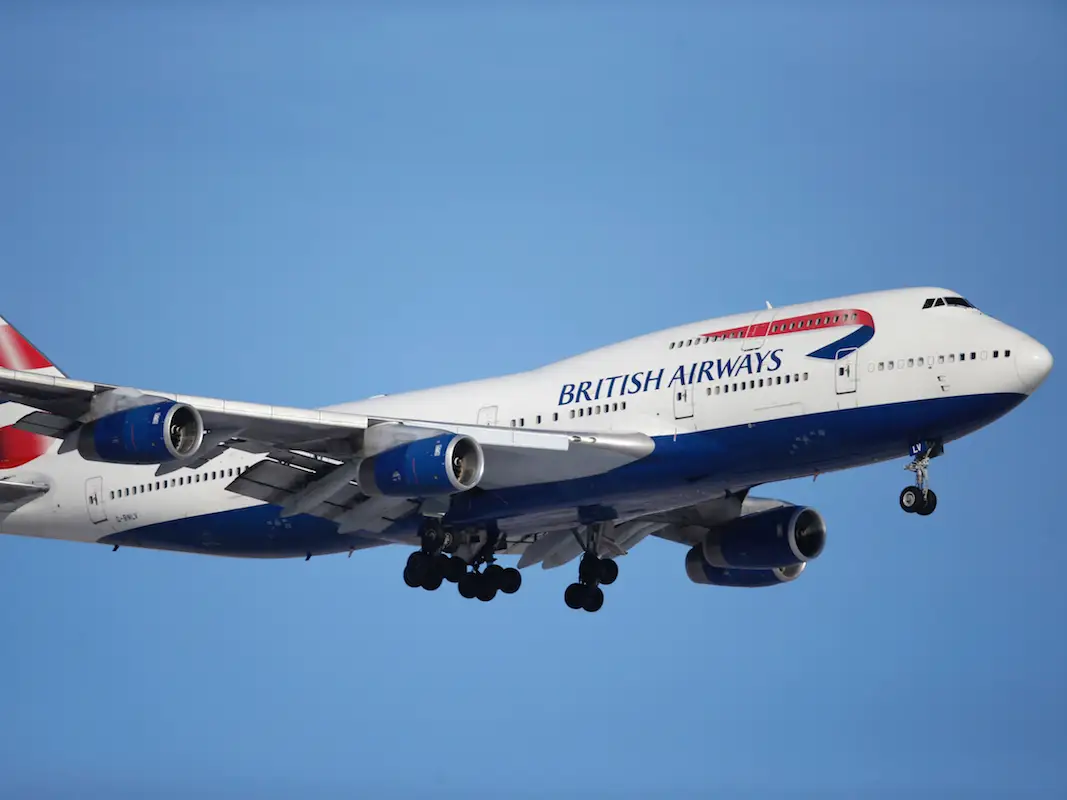Understanding Business Organizations
Company: British Airways
Introduction
British Airways (BA) is a well-known worldwide airline that serves as Great Britain’s flag carrier. British Airways was founded in 1974 and has provided air transit services for people and freight ever since. The airline’s headquarters are in London, with a fleet of over 250 aircraft that fly to over 200 locations worldwide (British Airways, 2023).
British Airways’ 2022 revenue was £11,030,000,000, up 190% from 2021’s £3,693,000,000, while its staff cost was £2,100,000,000. The British Airways Annual Report and Accounts, 2022 p. 2, shows that British Airways’ market share of London Heathrow Airport passengers climbed 220% in one year, from 10.3 million in 2020 to 34.0 million in 2022. Transportation includes British Airways and aviation. The airline provides passenger and freight service from Europe to the globe. Safety and security are strictly regulated in the industry (IAG, 2022).
British Airways is a full-service airline that provides a wide range of services, including passenger flights, cargo transportation, and luxury facilities such as lounges and on-board entertainment. The airline is well-known for its great service, dependability, and safety standards, which entice travellers to become clients. In recent years, British Airways has faced challenges, notably in the highly competitive airline business, as well as external causes such as economic swings, regulatory changes, and the effect of the coronavirus epidemic. Despite these hurdles, British Airways has managed to stay up with the changes by opening new routes, modernising its aircraft, and enhancing the passenger experience. This case study will look at British Airways’ organisational structure, functions, and culture. It will look at using a SWOT analysis is the airline’s strengths, weaknesses, opportunities, and threats, as well as a PESTLE study to understand the political, economic, social, technical, legal, and environmental variables that affect the airline. The objective help in analysing these many aspects is to get a complete view of British Airways, with a focus on the factors that influence the company’s operations and performance (Locus Assignments, 2024).
Business Organizational purposes
British Airways
Source (Independent , 2023)
The organizational purpose of British Airways (BA) is deeply rooted in its mission, vision, and values, which guide its operations and strategic decisions. BA’s mission is to connect people, cultures, and businesses across the globe, providing safe, reliable, and exceptional travel experiences (Independent , 2023). This mission reflects BA’s commitment to being a world-class airline that brings people together and facilitates economic growth and cultural exchange.
BA’s vision is to be the airline of choice for customers, employees, and shareholders, recognized for its innovation, sustainability, and commitment to excellence. This vision drives BA to constantly improve its services, adopt new technologies, and uphold high standards of corporate responsibility and environmental stewardship (Freshessays, 2023).
The key aspects of BA’s organizational purpose include
Customer Focus– British Airways aims to exceed customer expectations by offering exceptional service, comfortable travel experiences, and innovative solutions to meet the needs of modern travelers.
Operational Excellence- BA strives for operational excellence in all aspects of its business, from safety and reliability to efficiency and sustainability.
Employee Engagement– BA values its employees as its greatest asset, fostering a culture of respect, diversity, and inclusion, and providing opportunities for growth and development.
Financial Sustainability- BA is committed to delivering sustainable financial performance for its shareholders, ensuring long-term growth and profitability.
Some of the major objectives of BA include
- To enhance customer satisfaction and loyalty through personalized services and innovative offerings.
- To improve operational efficiency and cost-effectiveness through strategic investments and process improvements.
- To expand its global reach and market share by opening new routes and forming strategic partnerships.
- To promote sustainability and reduce its environmental impact through eco-friendly initiatives and responsible business practices.
Overall, BA’s organizational purpose is to be a global leader in the airline industry, delivering exceptional value to its customers, employees, and shareholders while upholding its commitment to safety, sustainability, and excellence.
Organizational Structure
Structuring Organization
Source (Skripak, 2018)
The British Airways (BA) company is managed by a hierarchical organizational structure, which is often called a tall structure. This type of organizational structure will be built with many layers of managers, where every layer is designated to handle a specific job or authority in decision-making. When it comes to BA’s case, the organizational structure is similar to the hierarchical model with the CEO being at the top of the pyramids, then the senior managers, exactly the middle managers, and then the frontline employees. The hierarchical structure provides straight and communicable lines of management, starting from the top level which oversees and directs the activities of the level below (Vulturius et al., 2024).
One of the most significant benefits of the similar hierarchical model as BA’s is the presence of explicit accountability and decision-making. The delegation consists of passing down of specific duties and functions. Hence, every employee knows to whom to report and who is responsible for making pivotal decisions. This may help the organization to remain efficient, since there is less misunderstanding about task roles, and expectation (Skripak, 2018).
Besides, the importance of the hierarchical structure lays in having a visible career path for employees, who have their eyes on getting promoted from the frontline roles to middle or higher management. This may, thus, spark good worker motivation and retention, as workers may see the prospects of upward mobility within the company.
But the hierarchical structure as well has both its benefits and drawbacks. This drawback sounds like transmitting of information is slow and complicated since the process involves the organizations’ levels at management. This gives rise to a slow pace in decision making and also hinders the process that is occasioned by the changes taking place in the market conditions (Cozmuta, 2024).
Additionally, hierarchical systems could cause innovation and creativity to be discouraged or ignored by moving the ideas up the chain of command. This problem is even critical in the aviation industry as the sector relies on innovation to stay competitive (Freshessays. 2023).
While advantages include transparency and responsibility definition, an hierarchical structure like BA’s may impede seamless communication as well as flexibility. This situation calls for the BA to find ways to strike a balance between the harshness of a hierarchal structure with the fluidity to fit well in a changing business environment.
Organizational functions
Organizational functions involve the different activities or tasks that people or departments of an organization perform for the whole organization to reach its goals and objectives. These functions are categorized into areas of marketing, operations, finance, human resources etc. In the case of British Airways (BA), three core functions play a significant role in the airline’s operations and success: operations, marketing,human resources.
Operations
Airline operations management is one of the essential functions in British Airways since it involves deciding how the company’s resources as the production and delivery processes are going to be managed. The main operation of BA is dealing with flight schedules, doing maintenance of aircraft, and serving the passengers. The function of operation is the one that is very important for BA’s success if it gives the airline the possibility to deliver safe, efficient and reliable services to the customers (Smith, 2024).
There are several ways BA’s operations function interact with other functions. Likewise, marketing and operations functions interconnect and have joint responsibility in establishing flight timetables, which are based on customers’ demand and brings in the maximum revenue. Also, HR department interact with operations to ensure that the airline has a palpable and prepared workforce to handle topical services (Ford, 2022).
Marketing
It is marketing that provides BA its customers base that not only makes more purchase in a highly competitive environment but also remains loyal in return. BA’s marketing function integrates of customer needs and expectations identification, price management and advertising as well as brand recognition maintenance. BA has to be promoted successfully through perking customer engagement, boosting brand loyalty, and gaining revenue (IAG , 2024).
The marketing function at BA comes across as a main link of different units through different ways. Likewise, in the operations function, it involves the operation team works together with the marketing department to ensure that the flight schedule is suitable for marketing strategies regarding full passenger bookings. In a similar way to that, the finance function teams up with marketing in order to choose the pricing strategy that is neither undercutting the competitors but at the same time profitable for the airline (Kolandaisamy et al., 2024).
Human Resources
People management is indispensable for the recruitment and retention of a high skilled workforce for BA organization. BA’s human resources department is involved in employee recruitment and training, employee relations, and labor law compliance. The human resources function is the key here, as it not only provides a satisfactory working environment but also helps in consistent engagement of employees on the part of them which results in better productivity.
BA’s HRD department has preferences and patterns of operating with other functions. Thus, the operations department cooperates with the personnel who are in charge of recruiting the right able employees whose production is time-saving and safe. Similarly, finance and human resources work as team to control labor costs and the budget for labour-related expenses.
Therefore, the most fundamental operations, marketing, and human resources functions cannot exempt for the excellent achievement of British Airways because they perform critical role in the provision of high-quality services, customer attraction and retention as well as management of workforce.
Organizational culture
Organizational culture, in simple terms, describes the elements that constitute values, beliefs, norms, and accepted way of working in an organization. This is the mutual knowledge that is available only to the members of the organization and is about the values and “how-tos” that should be followed within the organization. The organizational culture is formed, in the long term, through an interplay between a number of factors, including the organization’s past, leaders’ styles and the staff’s distinct personalities (Corbo et al., 2024).
There are several types of organizational culture, including
Clan Culture- This kind of culture is the one that stands out for being friendly and cooperative, which is an important part of how employees relate to one another and the organization as a whole. In organizations under the clan culture, the employees often exhibit high levels of belongingness and loyalty to the organization while the concept of teamwork and consensus building is embraced (Iskamto, 2023).
Adhocracy Culture: Culture of adhocracy is leaded by teamwork where personal initiative, creativity, and strategic thinking are the main values. While workforce employees in the adhocracy environments are accustomed to freedom within the boundaries supported by management. A failure is okay as long as they are capable to find out the root causes and improve them.
Market Culture– Market cultures are goal-achieving, competition-driven places which revolve around attaining objectives and surpassing one another. People in such situations are usually goal-oriented and achieve high results, and there is an accent on output and responsibility (Martinez et al., 2023).
Hierarchy Culture- Hierarchy culture is an institution of arrangement that emphasizes formalness and organization of the work environment. Decision-making is centralized, and commands are passed down as needed to comply with the authority and regulations. They are asked to follow and follow the given procedures and protocols without objection. They are not supposed not to add anything to the established ones.
Employees’ behaviours and attitudes reflect how highly they value the organization about its culture. A healthy motivating culture can really improve not only the mood, involvement and productivity of the employees but also of the workplace in general. It may be also the way to attract and keep key employees, as it is more probable that people would like to work in a company that has got a culture matching their values and principles (TING, 2023).
Despite that, a negative or unhealthy culture can result in low employee morale, high turnovers, as well as poor performance of duty. It is built-in impediment to introducing new thoughts and working methods, one that is not in conformity with the culture, as employees may be found to be resistant. Organizational culture could be regarded as the most significant factor in the blossoming of an organization.
SWOT Analysis
| Strengths British Airways (BA) has a number of strengths that can be used as a defensive measure to overcome situations like the Coronavirus, inflation, and political instability. Among its considerable strengths is its powerful brand identity and wide-spread recognition, which the company has accumulated in many years of operational history (Cozmuta,, 2024). BA’s wide-ranging network and alliance partnerships underpin its competitiveness and ability to give customers an immense choice of travel options through the partnerships. Consequently, BA’s positioning as customer-oriented with innovations like new aircraft model and an improved onboard experience sets it apart from peers (The strategy Story, 2023). | Weaknesses BA has a serious drawback of its high operating costs what can lead the airline to the economic downturns or external factors. Another design shortcoming is the fact that the business is still amazed with the traditional way of booking which may lead to the weak position to adopt its services to the style of online booking and self-service. Similarly, competitors can exploit BA’s unionized workforce and ongoing labour strikes in the industry, causing a headache to operations and customer service. |
| Opportunities Overcoming those challenges, the BA sector has many more opportunities for growing and making progress. First chance is a considerable increase in air travel itself, most notably in the emerging market. BA can develop this opportunity by expanding its flight network and retaining its place in the best airports. Furthermore, the constant tech innovation creates technological breakthroughs for BA providers to achieve better efficiency and client satisfaction through digital innovations (Gallagher, 2023). | Threats BA has faced several risks that could compromise its performance and profitability. One of the main challenges to consider is the competition of low cost carriers and other airlines as they can influence the pricing and market share adversely. Likewise external circumstances, like fuel prices volatility, government regulation and geopolitics may come as a challenge for the company viability. The Covid-19 pandemic in past has shown the airline industry is prone to external upheavals, and such instability reminds us of the responsibility to adapt and diversify the operations for BA (Team, 2023). |
PESTLE Analysis
| Political Factors | The political factors cover government policies, regulations, and stability which can all influence an organization. Airline of United Kingdom (BA), country’s elites like EU regulations, agencies and their elites affect this sphere of the aviation and safety significantly. Boasting of BA expansion in different markets may also pose some challenges with respect of nearby political stability (Momin, 2022). |
| Economic Factors | Economic ones related to economic environment and conditions describe the economic conditions and trends that influence an organization. The monetary policies, B-BA for example, are closely related to inflation rates, exchange rates, and the economic growth which, in turn, play a crucial role in shaping the demand for passenger transportation and travel patterns. The downturn in the economy may be reflected through decrease travel fund outlay as well as the ticket sale (Hamawandy et al., 2024). |
| Social Factors | Social factors refer to the social trends and demographics that can affect a certain business. For example, natural factors such as climate change, disasters, and environmental issues present challenges, while social factors like changing consumer preferences, lifestyle trends, and travel patterns cause more complex challenges to BA. For instance, an older population will likely go for alternative travel options compared to a younger generation (Admin, 2023). |
| Technological Factors | The technological factor includes technological developments and innovations which may have an impact on an organization. For BA, technology is particularly important, as it works with digitalization, automation, and data analytics, and all of this together are the core of their business. Such technologies could be used for production purposes, to be of help in developing their customer service, as well as to stimulate the innovation process in their services (Bernauer, 2023). |
| Legal Factors | Legal factors include laws and regulatory requirements that pose some challenges to organizations in their operations. BA may give special attention to legal factors which include air rules, competition law and labor laws such as the aviation rules, competition laws and labor laws. Awareness about such regulations is of the utmost importance for BA so that it can aid it in the avoidance of lawsuits and continuation of the company’s functions (TING, 2023). |
| Environmental Factors | The term Environmental stress indicat environmental issues and sustainability aspects that may affect an organization. It is of vital importance for the company to try to understand environmental issues, such as climate change, emissions regulations and a strong environmental or even sustainable approach. Through flooring changing to an eco-friendly construction method and basic recycling systems, BA is trying to become the most eco-friendly airline in Europe. |
Conclusion
The SWOT and PESTLE analyses in brief are among the factors that help to identify the strategic outlook of British Airways (BA) as well as those external factors that affect its operations. SWOT analysis proved to be a very helpful tool as it enabled to discover some crucial findings. What one should mention in connection with BA’s strength is the corresponding brand reputation, in combination with the route network and the airline company’s customer service and innovation. These advantageous situations not only helped BA to overcome the existing problems like the Covid-19, inflation and political instability but also build a way forward plan. Contrastingly, BA suffers from different disadvantages like excess operating cost, a large dependance on traditional booking methods, and can be affected by sometimes labor disputes, therefore it is to the business and health of the organization. According to the PESTLE analysis, the external factors that affect BA can be grouped into politics, environment, social, technological and legal, which include Brexit and governmental regulations that shape the ways of working of BA and the profits attainable. The economy of a country has many fluctuations especially inflation rate and rate of economic growth. These changes influence passenger demand and travel behavior which are also affected. Thus, BA services are subject to various social factors, including a changing market of consumer demands and a disposition to a new lifestyle. There are technological factors such as digitalization and automation that make BA a technologically driven company. Thus, the company is always introducing new innovations that improve its efficiency in operations. Legal issues that could affect BAs’s compliance with the industry’s rules and the contractual law are aviation regulations and competition laws. Considering environmental conditions including emissions regulation are at the same level of importance as sustainability factors, BA need to think and practice sustainable methods.
Reference
Admin (2023). British Airways PESTEL Analysis – The Strategy Story. [online] https://thestrategystory.com/blog/british-airways-pestel-analysis/. Available at: https://thestrategystory.com/blog/british-airways-pestel-analysis/#google_vignette
Bernauer, V. S. (2023). Reflections on the evolution of a long-term study of airline cultures: an interview with Albert J. Mills and Jean Helms Mills. Equality, Diversity and Inclusion: An International Journal, 42(4), 469-479.https://www.emerald.com/insight/content/doi/10.1108/EDI-09-2021-0237/full/html
British Airways (2023). Our Brands. [online] careers.ba.com. Available at: https://careers.ba.com/our-brands.
Corbo, L., Corrado, R., & Ferriani, S. (2024). Network pathways of peripheral firm entry: Empirical evidence from the global airline industry. Research Policy, 53(4), 104960.https://www.sciencedirect.com/science/article/pii/S004873332400009X
Cozmuta, A. (2024). Selling ‘The World’s Favourite Airline’: British Airways’ privatisation and the motives behind it. Business History, 66(1), 181-200.https://www.tandfonline.com/doi/abs/10.1080/00076791.2021.1926991
Cozmuta, A. (2024). Selling ‘The World’s Favourite Airline’: British Airways’ privatisation and the motives behind it. Business History, 66(1), 181-200.https://theses.gla.ac.uk/id/eprint/84089
Ford, H. (2024). 3 Organisational Structure and Leadership. Business Model Innovation: A Blueprint for Strategic Change, 51.https://books.google.com/books?hl=en&lr=&id=e10FEQAAQBAJ&oi=fnd&pg=PA51&dq=Understanding+Business+Organisations+Company:+British+Airways&ots=EOzbXBLqwt&sig=9LuYUIfcoyketFmRMNnEWeHfm7Q
Freshessays. (2023). British Airways Case Study | Free Essay Examples. [online] https://samples.freshessays.com/british-airways-case-study.html. Available at: https://samples.freshessays.com/british-airways-case-study.html.
Gallagher, R. (2023). Organising to win: the role of trade union leadership in the 2016-17 Mixed Fleet Unite-British Airways dispute (Doctoral dissertation).https://keele-repository.worktribe.com/output/597594
Hamawandy, N. M., Ali, R., Bewani, H. A. W. A., bdulmajeed Jamil, D., Rahman, S. K., & Othman, B. J. (2021). The financial Impacts of (COVID-19) on financial reporting quality Airlines Companies: British Airlines. The journal of contemporary issues in business and government, 27(2), 5264-5271.https://cibgp.com/au/index.php/1323-6903/article/view/1429
IAG (2022). INTERNATIONAL AIRLINES GROUP ANNUAL REPORT AND ACCOUNTS 2022 Connected by our purpose Contents. [online] Available at: https://www.iairgroup.com/media/0tipxqai/annual-report-and-accounts-2022.pdf.
Independent (2023). What is ‘wet leasing’ and why is British Airways doing it? [online] The Independent. Available at: https://www.independent.co.uk/travel/news-and-advice/wet-leasing-flights-british-airways-b2275180.html.
Iskamto, D. (2023). Organizational Culture and Its Impact on Employee Performance. International Journal of Management and Digital Business, 2(1), 47-55.https://journal.adpebi.com/index.php/ijmdb/article/view/584
Kolandaisamy, R., Rajagopal, H., Kolandaisamy, I., & Sinnappan, G. S. (2024). Digital Security Challenges Faced by Business Organizations.https://alife-robotics.co.jp/members2024/icarob/data/html/data/OS/OS18-9.pdf
Locus Assignments. (2024). Business Environment Assignment – British Airways. [online] www.locusassignments.com. Available at: https://www.locusassignments.com/solution/business-environment-assignment-british-airways.
Martinez, N., Kilag, O. K., & Macario, R. (2023). The Impact of Organizational Culture on Leadership Strategies in Crisis Management. Excellencia: International Multi-disciplinary Journal of Education (2994-9521), 1(5), 454-466.https://multijournals.org/index.php/excellencia-imje/article/view/145
Momin, A. (2022). British Airways PESTLE Analysis 2022. [online] pestleanalysis.com. Available at: https://pestleanalysis.com/british-airways-pestle-analysis/.
Skripak, S., Cortes, A. and Walz, A. (2018). Chapter 9 Structuring Organizations. viva.pressbooks.pub, [online] 6(9 Chapter 9 Structuring Organizations). Available at: https://viva.pressbooks.pub/fundamentalsofbusiness/chapter/chapter-9-structuring-organizations/.
Smith, L. C. (2024). ‘Like aid given by a mother to her young’: The British Overseas Airways Corporation (BOAC) and the marketing of economic development 1948–1965. Business History, 1-26.https://www.tandfonline.com/doi/abs/10.1080/00076791.2024.2319341
Team, M.S. (2023). British Airways SWOT Analysis – Key Points & Overview. [online] MBA Skool. Available at: https://www.mbaskool.com/brandguide/airlines/532-british-airways.html#google_vignette [Accessed 8 May 2024].
The strategy Story (2023). British Airways SWOT Analysis. [online] The Strategy Story. Available at: https://thestrategystory.com/blog/british-airways-swot-analysis/.
TING, H. (2023). AN ASSESSMENT OF HOW TO ACHIEVE COMPETITIVE ADVANTAGE AND ALLEVIATE ORGANIZATIONAL WEAKNESSES: INSIGHT FROM BRITISH AIRWAYS (Doctoral dissertation, SIAM UNIVERSITY).https://e-research.siam.edu/wp-content/uploads/2023/09/HE-TING-MBA-2022-IS-An-Assessment-of-How-to-Achieve-Competitive-Advantage.pdf
Vulturius, S., Budd, L., Ison, S., & Quddus, M. (2024). Commercial airline pilots’ job satisfaction before and during the COVID-19 pandemic: A comparative study. Research in Transportation Business & Management, 53, 101108.https://www.sciencedirect.com/science/article/pii/S2210539524000105
Supportive Link
https://www.facebook.com/marketing91 (2015). SWOT analysis of British Airways – British airways SWOT. [online] Marketing91. Available at: https://www.marketing91.com/swot-analysis-of-british-airways/.




